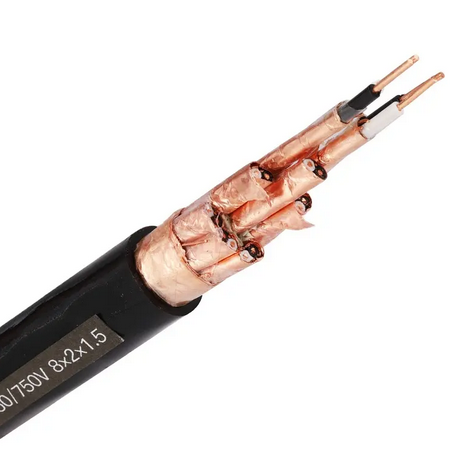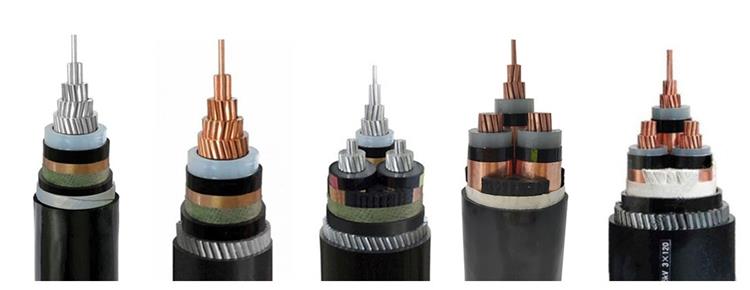Outdoor cables play a vital role in connecting our world, whether it's for telecommunications, the internet, or outdoor security systems.
Understanding outdoor cables' different types and specifications is crucial for ensuring reliable and efficient outdoor connectivity.
In this comprehensive guide, ZMS will explore the various types of outdoor cables, their specifications, and their applications.

Fiber optic cables are commonly used for outdoor applications due to their high bandwidth and immunity to electromagnetic interference. They consist of one or more optical fibers enclosed in a protective jacket.
Outdoor fiber optic cables are designed to withstand harsh environmental conditions such as temperature fluctuations, moisture, and UV radiation.
Coaxial cables are frequently utilized for outdoor TV antenna connections and satellite dishes. They consist of a central conductor, an insulating layer, a metallic shield, and an outer insulating layer.
Outdoor coaxial cables are engineered to resist water ingress and corrosion, making them suitable for outdoor use.
Ethernet cables, particularly Cat5e, Cat6, and Cat6a, are often deployed for outdoor networking applications.
They are designed to transmit data over short to medium distances and come in various outdoor-rated versions, such as direct burial and outdoor UV-resistant cables.
These cables provide reliable connectivity for outdoor surveillance cameras, Wi-Fi access points, and outdoor networking infrastructure.
Direct burial cables are specifically engineered for underground installation without the need for conduit. These cables typically feature ruggedized jackets and enhanced protection against moisture, soil acidity, and mechanical stress.
They are commonly used for outdoor lighting systems, underground utilities, and outdoor speaker installations.

Outdoor cables must be resistant to various weather conditions, including rain, snow, extreme temperatures, and UV radiation.
Look for cables with UV-resistant jackets and robust insulation materials to ensure longevity in outdoor environments.
Waterproofing is crucial for outdoor cables to prevent water ingress, which can lead to signal degradation and corrosion.
Outdoor cables should have waterproof jackets and moisture-blocking materials to maintain reliable performance in wet conditions.
Outdoor cables should have a wide temperature operating range to withstand temperature fluctuations without compromising performance.
Look for cables with temperature ratings suitable for the local climate conditions.
Outdoor cables may be subjected to mechanical stress from installation, environmental factors, and physical disturbances.
Cables with high tensile strength, crush resistance, and durability are essential for maintaining signal integrity and longevity in outdoor installations.
Exposure to UV radiation can degrade the jacket and insulation of outdoor cables over time.
UV-resistant cables are designed to withstand prolonged exposure to sunlight without deterioration, ensuring reliable performance and longevity in outdoor applications.

Outdoor Ethernet cables connect outdoor networking devices such as surveillance cameras, Wi-Fi access points, and outdoor switches.
These cables provide high-speed data transmission and reliable connectivity for outdoor applications.
Fiber optic cables are extensively used in outdoor telecommunications infrastructure for long-distance data transmission.
They are deployed in fiber optic networks for internet service providers, telecommunications companies, and government agencies to deliver high-speed internet and telecommunication services to remote areas.
Direct burial cables are commonly used for outdoor lighting systems, including landscape lighting, pathway lighting, and garden lighting.
These cables provide power and control signals for outdoor lighting fixtures while withstanding exposure to soil, moisture, and environmental elements.
Outdoor cables play a crucial role in powering and connecting outdoor security systems such as surveillance cameras, motion sensors, and perimeter fencing.
Coaxial and Ethernet cables often transmit video, audio, and data signals for outdoor security applications.
Outdoor cables are essential components of modern outdoor infrastructure, providing connectivity for telecommunications, networking, lighting, and security systems.
By understanding the different types, specifications, and applications of outdoor cables, you can select the most suitable cables for your outdoor projects and ensure reliable performance in diverse environmental conditions.
Whether it's for residential, commercial, or industrial applications, choosing the right outdoor cables is essential for achieving efficient and durable outdoor connectivity.